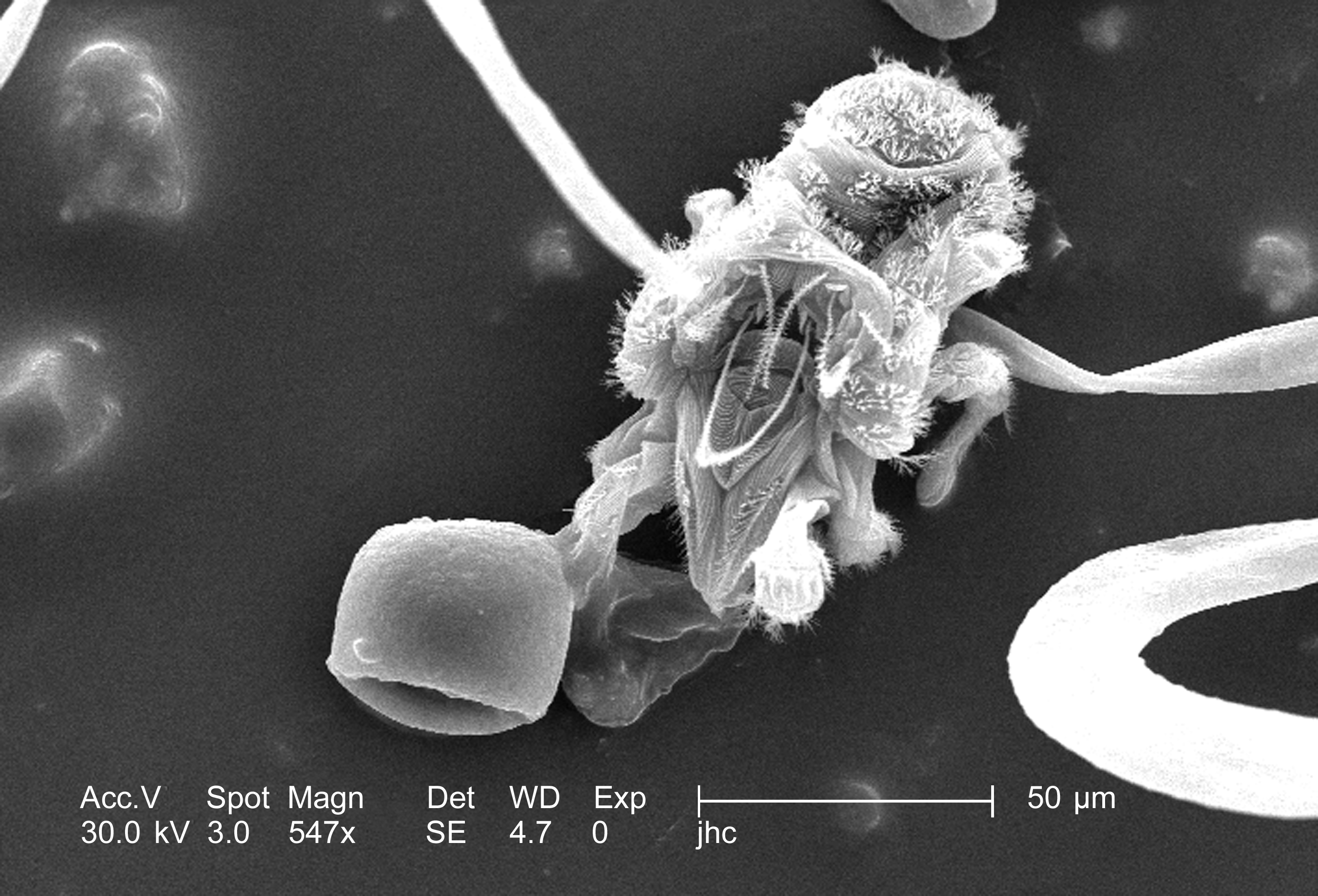|
Nanorchestidae
Nanorchestidae is a family of endeostigs in the order Endeostigmata. There are at least two genera and two described species in Nanorchestidae. Mites of the family Nanorchestidae live in soil throughout world and may live in both hot and very cold deserts A desert is a barren area of landscape where little precipitation occurs and, consequently, living conditions are hostile for plant and animal life. The lack of vegetation exposes the unprotected surface of the ground to denudation. About one .... While mites of the genus ''Speleorchestes'' are able to live in the hottest deserts, those of the genus ''Nanorchestes'' live in the coldest areas on earth. ''Nanorchestes antarcticus'', at a size of around a quarter of a millimeter, occurs in Antarctic soil and, to a lesser extent, on glaciers. Genera * '' Nanorchestes'' Topsent & Trouessart, 1890 * '' Speleorchestes'' Trägårdh, 1909 References Further reading * * * * Acariformes Acari families {{acari- ... [...More Info...] [...Related Items...] OR: [Wikipedia] [Google] [Baidu] |
Endeostigmata
Endeostigmata is a suborder of acariform mites. There are about ten families in Endeostigmata. The grouping is strongly suspected to be paraphyletic In taxonomy (general), taxonomy, a group is paraphyletic if it consists of the group's most recent common ancestor, last common ancestor and most of its descendants, excluding a few Monophyly, monophyletic subgroups. The group is said to be pa ..., containing unrelated early diverging lineages of mites. Taxonomy * Suborder Endeostigmata Reuter, 1909 (5 superfamilies, 10 families, 27 genera, 108 species) ** Infraorder Bimichaliida Oconnor, 1984 (1 superfamily) ***Superfamily Alycoidea G. Canestrini & Fanzago, 1877 (3 families) ****Family Alycidae G. Canestrini & Fanzago, 1877 (6 genera, 29 species) ****Family Nanorchestidae Grandjean, 1937 (5 genera, 45 species) ****Family Proterorhagiidae Lindquist & Palacios-Vargas, 1991 (1 genus, 1 species) **Infraorder Nematalycina Lindquist, Krantz & Walter, 2009 (1 superfamily) ***Su ... [...More Info...] [...Related Items...] OR: [Wikipedia] [Google] [Baidu] |
Desert
A desert is a barren area of landscape where little precipitation occurs and, consequently, living conditions are hostile for plant and animal life. The lack of vegetation exposes the unprotected surface of the ground to denudation. About one-third of the land surface of the Earth is arid or semi-arid. This includes much of the polar regions, where little precipitation occurs, and which are sometimes called polar deserts or "cold deserts". Deserts can be classified by the amount of precipitation that falls, by the temperature that prevails, by the causes of desertification or by their geographical location. Deserts are formed by weathering processes as large variations in temperature between day and night put strains on the rocks, which consequently break in pieces. Although rain seldom occurs in deserts, there are occasional downpours that can result in flash floods. Rain falling on hot rocks can cause them to shatter, and the resulting fragments and rubble strewn over the ... [...More Info...] [...Related Items...] OR: [Wikipedia] [Google] [Baidu] |
Antarctic
The Antarctic ( or , American English also or ; commonly ) is a polar region around Earth's South Pole, opposite the Arctic region around the North Pole. The Antarctic comprises the continent of Antarctica, the Kerguelen Plateau and other island territories located on the Antarctic Plate or south of the Antarctic Convergence. The Antarctic region includes the ice shelves, waters, and all the island territories in the Southern Ocean situated south of the Antarctic Convergence, a zone approximately wide varying in latitude seasonally. The region covers some 20 percent of the Southern Hemisphere, of which 5.5 percent (14 million km2) is the surface area of the Antarctica continent itself. All of the land and ice shelves south of 60°S latitude are administered under the Antarctic Treaty System. Biogeographically, the Antarctic realm is one of eight biogeographic realms of Earth's land surface. Geography As defined by the Antarctic Treaty System, the Antarctic r ... [...More Info...] [...Related Items...] OR: [Wikipedia] [Google] [Baidu] |
Acariformes
The Acariformes, also known as the Actinotrichida, are the most diverse of the two superorders of mites. Over 32,000 described species are found in 351 families, with an estimated total of 440,000 to 929,000 species, including undescribed species. Systematics and taxonomy The Acariformes can be divided into two main clades – Sarcoptiformes and Trombidiformes. In addition, a paraphyletic group containing primitive forms, the Endeostigmata, was formerly also considered distinct. The latter is composed of only 10 families of little-studied, minute, soft-bodied mites that ingest solid food, such as fungi, algae, and soft-bodied invertebrates such as nematodes, rotifers, and tardigrades. These clades were formerly considered suborders, but this does not allow for a sufficiently precise classification of the mites and is abolished in more modern treatments; the Endeostigmata are variously considered to form a suborder on their own (the old view) or are included mainly in the Sarcopt ... [...More Info...] [...Related Items...] OR: [Wikipedia] [Google] [Baidu] |


